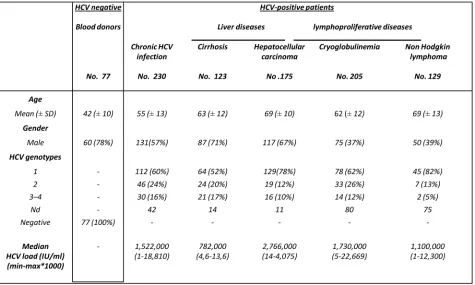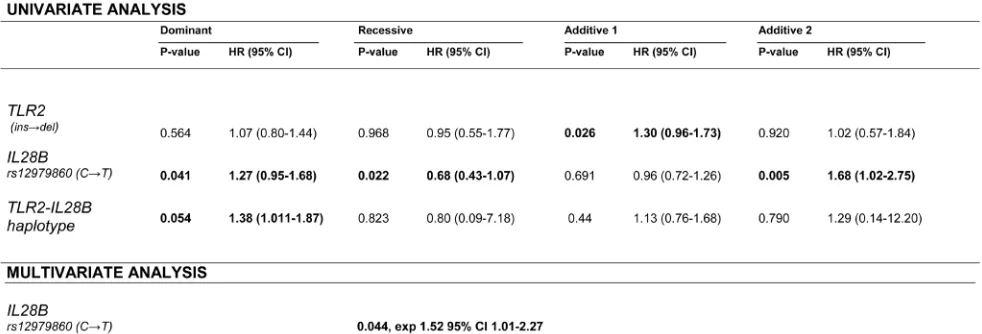HCV-related liver and lymphoproliferative diseases: association with polymorphisms of IL28B and TLR2
Full text
Figure




Related documents
Green IT is also called green computing it describes the study and the using of computer resources in an efficient way. Green IT starts with manufacturers producing
For the ordered list of three predicted categories, it was 90% success rate that system correctly predicted the belonging-ness of the UBE, under test, to category at
Thomas Larson provides an overview of the music, but eschews detailed analytical inter- pretation (see Larson, The Saddest Music Ever Written: The Story of Samuel
The aim of the present study is the detection of MRSA from various clinical departments at a local private hospital in Sana'a, Yemen and determining their
A Study of the Structural, Optical and Electrical Properties of SnS Thin Films Modified by Plasma PROPERTIES OF P-TYPE SnS THIN FILMS PREPARED BYCHEMICAL
The coefficient of D&O is 0.146 (t = 6.94), which is significant at the 1% level, implying that when clients have D&O liability insurance, auditors charge higher audit
An unaddressed question in the literature is “Do distinct racial-gender identity subgroups of Black emerging adult men experience different patterns of risk taking and health

